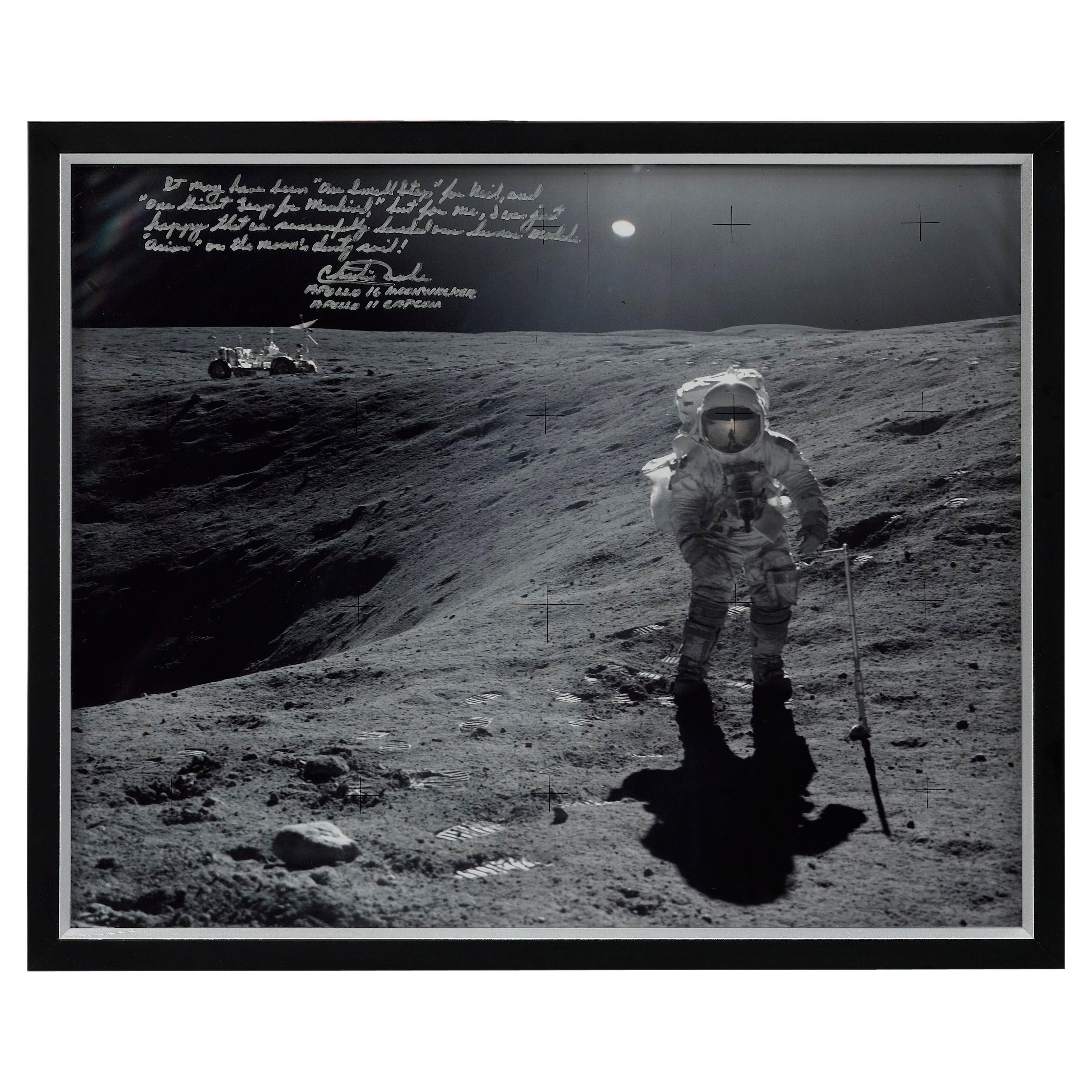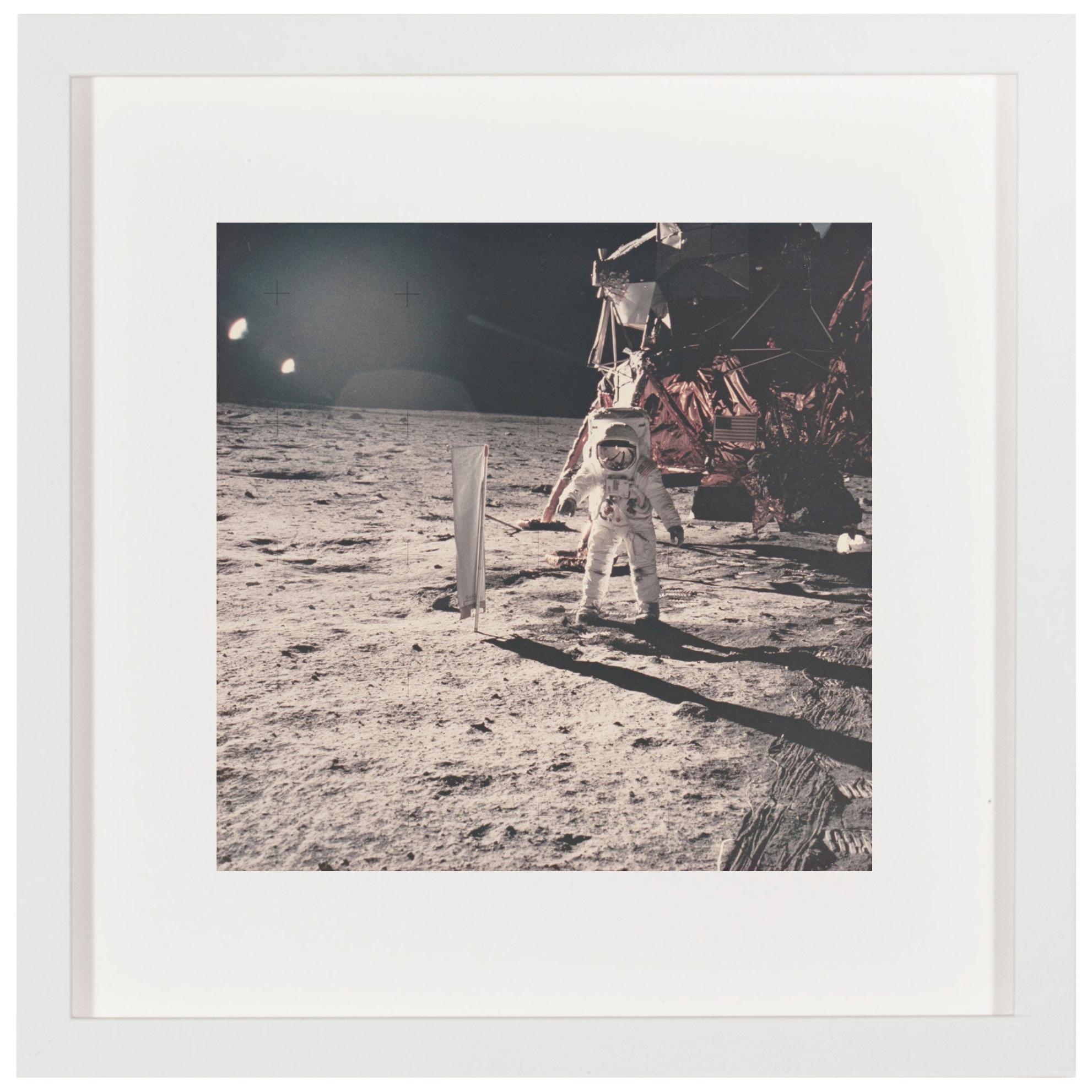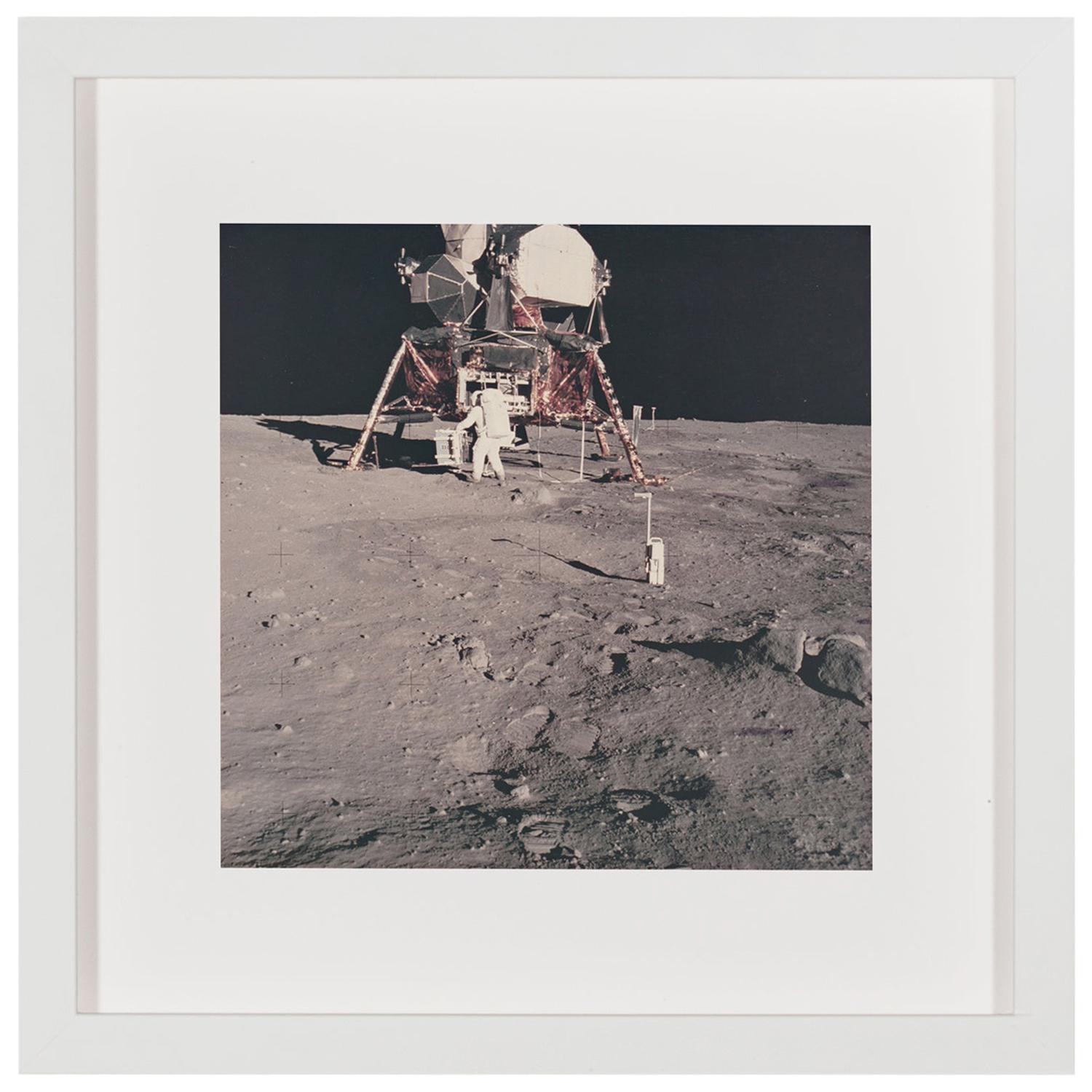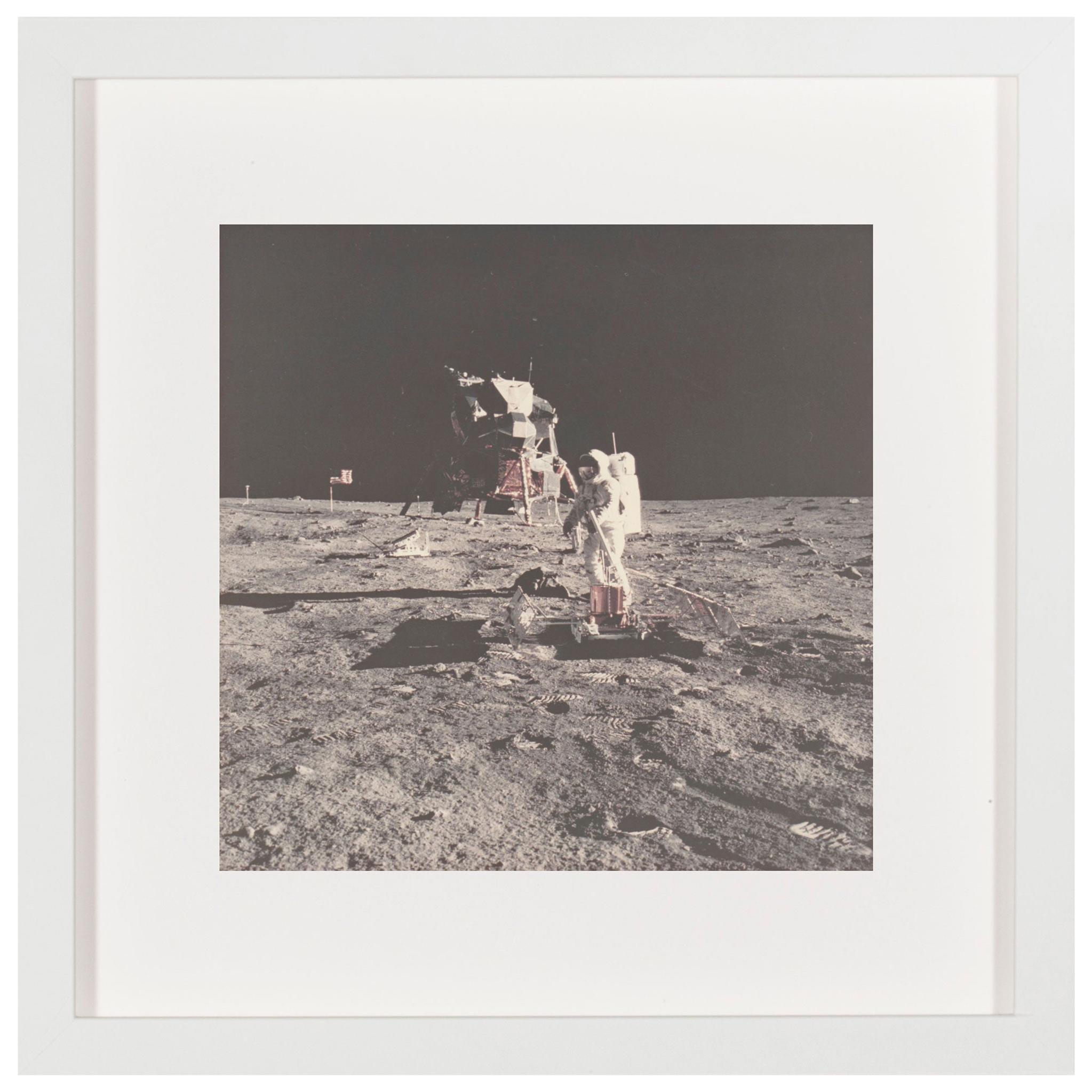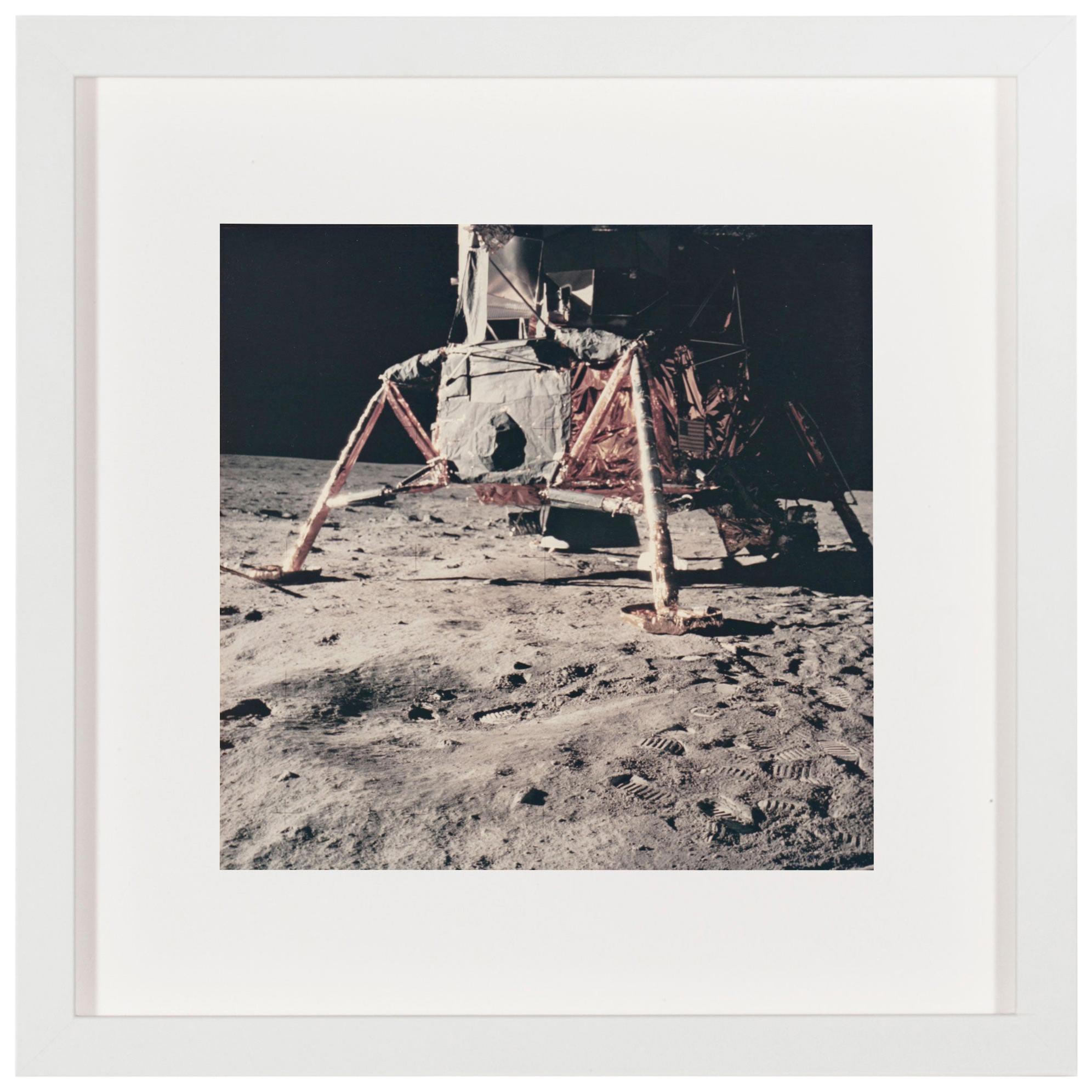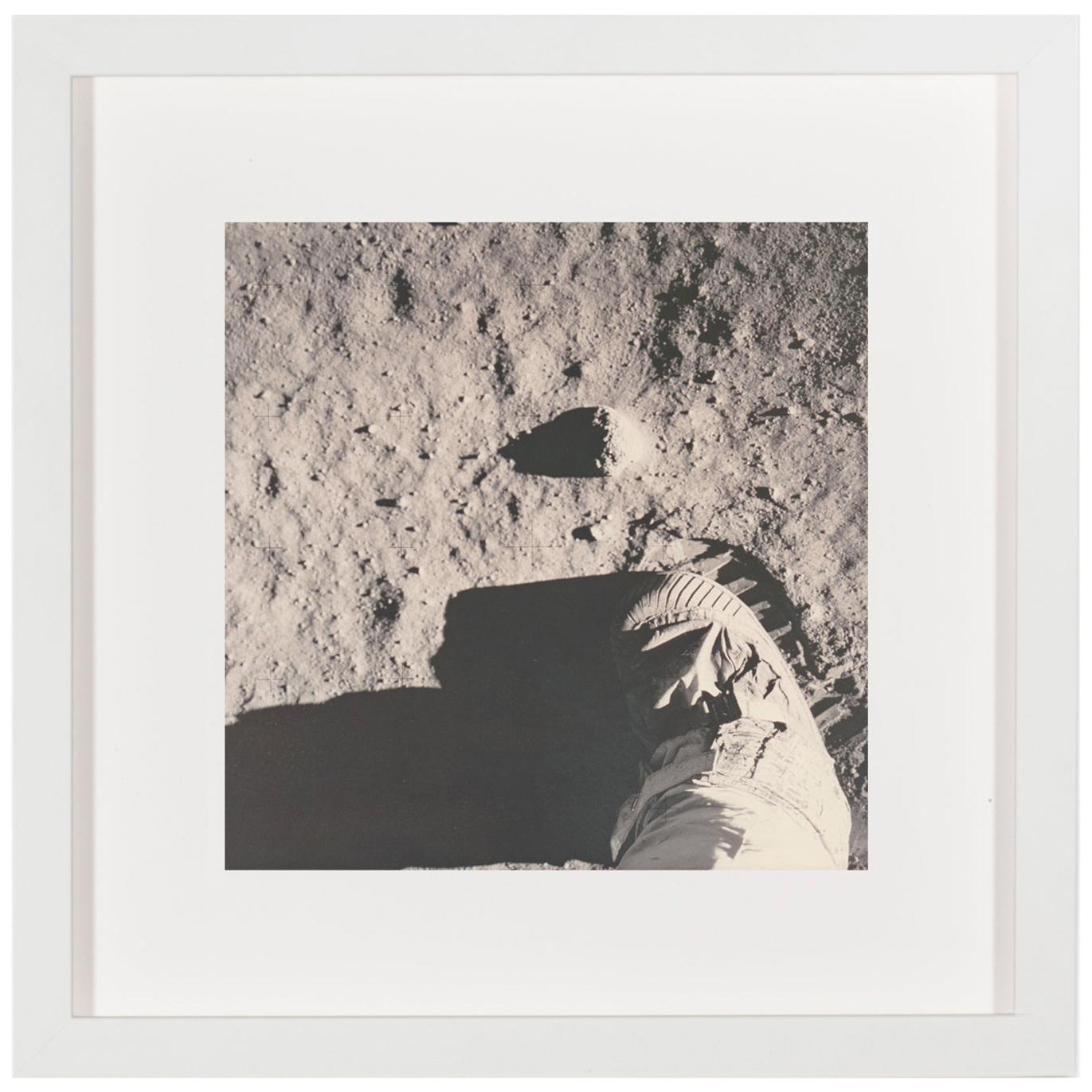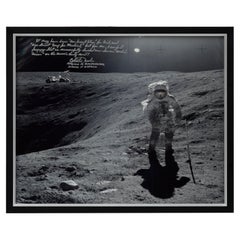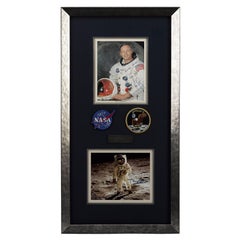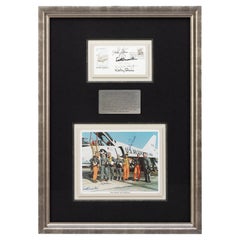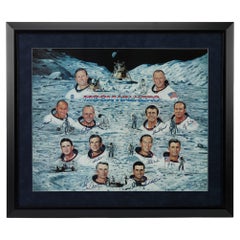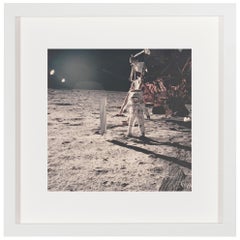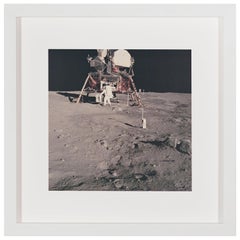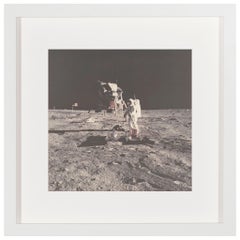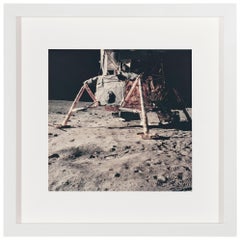Items Similar to Charlie Duke Signed Photograph of the Phoenix Lander on Mars
Video Loading
Want more images or videos?
Request additional images or videos from the seller
1 of 10
Charlie Duke Signed Photograph of the Phoenix Lander on Mars
$3,250
£2,478.63
€2,856.02
CA$4,642.54
A$5,103.95
CHF 2,638.31
MX$61,071.97
NOK 33,308.06
SEK 31,227.23
DKK 21,330.37
About the Item
Presented is a photograph of the Phoenix Lander on Mars, signed and inscribed by Apollo 16 moonwalker Charlie Duke. In the inscription, Duke shares his thoughts of exploring the red planet as the next step in space exploration. Written in black felt tip, Duke writes in full, "The challenge of Mars is going to be tremendous! To think about going there and building a station on Mars is going to be a challenging endeavor and I think we can do it. The human spirit wants to go to Mars and go out and explore. It will be another small step for man and another giant leap for mankind! Charlie Duke, Apollo 11 Capcom, Apollo 16 Moonwalker."
The goals of the Phoenix Mars Lander were to study the history of water in the Martian arctic, search for evidence of a habitable zone, and assess the biological potential of the planet. Launched on August 4, 2007, the Phoenix landed at the northern pole of the red planet and studied the Martian soil. Phoenix completed its three-month mission in August of 2008; the lander worked for two additional months before reduced sunlight caused energy to become insufficient to keep the lander functioning.
Phoenix's study of Mars resulted in a long list of revolutionary discoveries about the planet. One of the most notable came on July 31, 2008, when the spacecraft confirmed the presence of water ice on Mars after successfully collecting a soil sample containing ice from a trench. The historic discovery marked the first time water was sampled on the Red Planet. The Phoenix also found snow, and was able to determine snow was part of the hydrological cycle on Mars.
Charles “Charlie” Duke was a fighter pilot, U.S. Air Force Officer, and astronaut. Duke served as Lunar Module Pilot during the Apollo 16 mission, aimed to answer broad questions about the Moon’s surface by inspecting sample materials, conducting experiments, and completing photographic tasks from lunar orbit. Duke was known even before he stepped foot on the Moon, as he was employed as a Mission Control specialist in Houston where the world heard Duke’s distinctive voice during the Apollo 11 Mission: “Roger, Twank...Tranquility, we copy you on the ground. You got a bunch of guys about to turn blue. We’re breathing again. Thanks a lot!” After Duke piloted Apollo 16, he stayed with NASA and remained the back-up pilot for Apollo 17. Duke retired in 1976 and earned the Air Force Distinguished Service Medal, the Legion of Merit, and the NASA Distinguished Service Medal.
CONDITION:
Very good condition. Satin finish photograph. Inscription is in black felt tip pen. Inscription is legible and not smudged. Photograph Dimensions: 16"H x 20"W.
Framed according to highest archival standards with Conservation Clear UV Glass and a custom built wooden frame.
- Dimensions:Height: 17.5 in (44.45 cm)Width: 21.25 in (53.98 cm)Depth: 1 in (2.54 cm)
- Materials and Techniques:
- Place of Origin:
- Period:
- Date of Manufacture:2008
- Condition:Additions or alterations made to the original: Framed to the highest archival standards in June of 2022 by Rio Grande Framing in Colorado Springs, Colorado. Wear consistent with age and use.
- Seller Location:Colorado Springs, CO
- Reference Number:Seller: AS1951stDibs: LU909730049092
About the Seller
4.9
Platinum Seller
Premium sellers with a 4.7+ rating and 24-hour response times
Established in 2010
1stDibs seller since 2011
467 sales on 1stDibs
Typical response time: 1 hour
- ShippingRetrieving quote...Shipping from: Colorado Springs, CO
- Return Policy
Authenticity Guarantee
In the unlikely event there’s an issue with an item’s authenticity, contact us within 1 year for a full refund. DetailsMoney-Back Guarantee
If your item is not as described, is damaged in transit, or does not arrive, contact us within 7 days for a full refund. Details24-Hour Cancellation
You have a 24-hour grace period in which to reconsider your purchase, with no questions asked.Vetted Professional Sellers
Our world-class sellers must adhere to strict standards for service and quality, maintaining the integrity of our listings.Price-Match Guarantee
If you find that a seller listed the same item for a lower price elsewhere, we’ll match it.Trusted Global Delivery
Our best-in-class carrier network provides specialized shipping options worldwide, including custom delivery.More From This Seller
View AllCharlie Duke Signed Photograph of Apollo 16 Moonwalk
Located in Colorado Springs, CO
Presented is an Apollo 16 mission photograph, signed and inscribed by Apollo 16 moonwalker Charlie Duke. The photograph shows Duke collecting lunar samples n...
Category
Vintage 1970s American Modern Photography
Materials
Paper
Buzz Aldrin and Neil Armstrong Signature Collage
Located in Colorado Springs, CO
Presented is an exclusive Apollo 11 Signature Collage. The celebratory and collectible collage is composed of a Sea of Tranquility photograph signed by astronaut Buzz Aldrin, a signe...
Category
Mid-20th Century American Mid-Century Modern Historical Memorabilia
Materials
Paper
Mercury Seven Signed Collage Shepard, Glenn, Carpenter, Cooper, Slayton, Schirra
Located in Colorado Springs, CO
The Mercury Seven, composed of Alan Shepard, Gus Grissom, John Glenn, Deke Slayton, Scott Carpenter, Wally Schirra, and Gordon Cooper, was a group of seven fearless astronauts select...
Category
Mid-20th Century American Mid-Century Modern Historical Memorabilia
Materials
Paper
Moonwalkers Limited Edition Lithograph by Ron Lewis, Ed. 433/1000, Signed, 1986
Located in Colorado Springs, CO
Presented is a much sought-after, limited edition lithograph entitled Moonwalkers by Ron Lewis. This piece of space history contains the original signatures of eleven of the twelve American astronauts who stepped onto the Moon's surface. Signed in felt tip blue ink by their portraits are the original autographs of Buzz Aldrin, Alan Bean...
Category
Vintage 1980s American Prints
Materials
Paper
"Teammates in Mankind's Greatest Adventure" Signed Poster by National Geographic
Located in Colorado Springs, CO
Presented is an original autographed poster from a 1973 issue of National Geographic magazine, celebrating the historic Apollo missions from the fir...
Category
Vintage 1970s American Mid-Century Modern Posters
Materials
Paper
Charles A. Lindbergh Signature
Located in Colorado Springs, CO
This is a handsome display featuring the signature of celebrated American aviator Charles A. Lindbergh (1902-1974). Lindbergh signed the page, now cut, in black ink as "Charles A. Li...
Category
Antique Mid-19th Century American Aviation Objects
Materials
Paper
$2,600 Sale Price
20% Off
You May Also Like
Vintage NASA Photograph of the Apollo 11 Moon Landing
By Meisel Photochrome Corporation
Located in Brooklyn, NY
Patrick Parrish is excited to offer an incredible group of original photographs printed by Meisel Photochrome Corporation of Dallas around 1970, shortly after the Apollo 11 Mission. ...
Category
Vintage 1960s American Photography
Materials
Paper
Vintage NASA Photograph of the Apollo 11 Moon Landing
By Meisel Photochrome Corporation
Located in Brooklyn, NY
Patrick Parrish is excited to offer an incredible group of original photographs printed by Meisel Photochrome Corporation of Dallas around 1970, shortly after the Apollo 11 Mission. ...
Category
Vintage 1960s American Photography
Materials
Paper
Vintage NASA Photograph of the Apollo 11 Moon Landing
By Meisel Photochrome Corporation
Located in Brooklyn, NY
Patrick Parrish is excited to offer an incredible group of original photographs printed by Meisel Photochrome Corporation of Dallas around 1970, shortly after the Apollo 11 Mission. ...
Category
Vintage 1960s American Photography
Materials
Paper
Vintage NASA Photograph of the Apollo 11 Moon Landing
By Meisel Photochrome Corporation
Located in Brooklyn, NY
Patrick Parrish is excited to offer an incredible group of original photographs printed by Meisel Photochrome Corporation of Dallas circa 1970, shortly after the Apollo 11 Mission. Meisel was the official photo contractor for NASA and processed all the images from the Apollo missions. These beautiful vintage 8” x 8” chromogenic prints on Kodak paper are framed in a 13" x 13" frames and currently available at the gallery.
NASA’s historic Apollo 11 Mission—crewed by astronauts Michael Collins, Buzz Aldrin, and commander Neil Armstrong—departed earth on July 16th, 1969, and landed on the moon four days later, near the Sea of Tranquility, while 500 million people watched on television. Armstrong and Aldrin...
Category
Vintage 1960s American Photography
Materials
Paper
Vintage NASA Photograph of the Apollo 11 Moon Landing
By Meisel Photochrome Corporation
Located in Brooklyn, NY
Patrick Parrish is excited to offer an incredible group of original photographs printed by Meisel Photochrome Corporation of Dallas around 1970, shortly after the Apollo 11 Mission. ...
Category
Vintage 1960s American Photography
Materials
Paper
Vintage NASA Photograph of the Apollo 11 Moon Landing
By Meisel Photochrome Corporation
Located in Brooklyn, NY
Patrick Parrish is excited to offer an incredible group of original photographs printed by Meisel Photochrome Corporation of Dallas around 1970, shortly after the Apollo 11 Mission. ...
Category
Vintage 1960s American Photography
Materials
Paper
More Ways To Browse
Trench Ww1
Victorian Advertising
Antique Chaps
Brass Shell Casing
Georg Jensen Christmas Ornament
Georg Jensen Christmas
Fire Memorabilia
Royal Coronation
Vending Machine
18th Century Coins
1953 Coronation
Antique German Santa
Antique Hand Grinders
Battle Of The Nile
Cast Iron Antique Grinder
General Lee
Handwritten Letter
Wwii Antiques
